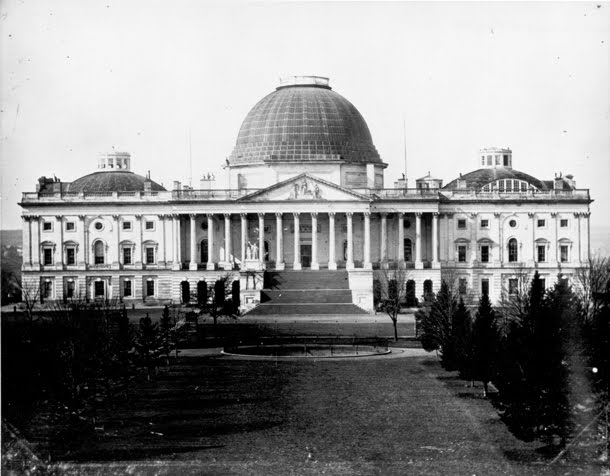from Lew Rockwell.com and Campaign For Liberty:
Reality Economics
By Lew Rockwell
View all 19 articles by Lew Rockwell
Published 09/07/10
Printer-friendly version
As a culture, we like our reality on television, but seem to oppose it in economics.
For more than two years now, and even longer depending on your dating scheme, the federal government has waged war on the reality of the incredible Fed-fueled bubble that developed in housing with spillover effects on the rest of economic life.
That bubble had to explode to restore some sanity to the economic environment. There is no getting around that. The policies were all about trying to paper over what we did not want to deal with as facts. But the facts won't go away.
Do we have to make a television show to get Washington to see it?
The FDIC has admitted that some 829 banks remain at risk of failure. That's one in ten. Only 118 have failed this year but many more should have and would have absent Fed intervention. Meanwhile, there are no new banks started in the U.S. in the last quarter -- the first time in 38 years that this has been true. As for the actual soundness of the banks, it's anyone's guess. How much bad debt they are carrying, with both lenders and borrowers agreeing to look the other way, is something that no one wants to know.
Then there is the other topic that no one wants to talk about: house prices. They need to fall more. Washington has attempted to prop them up with some 18 different programs from mortgage buyouts to tax schemes. It delayed the fall of prices for a time. But they have begun to fall again, exactly to the point where nature wants to take them.
The problem is that you can't artificially boost both supply and demand at the same time. If you subsidize housing construction and that results in more houses being built, you apply downward pressure on the prices of houses that are currently on the market. If you subsidize house buying, you also promote house selling, allowing the reality of the real estate glut to express itself in home prices.
There is no way that the central planners can get around this problem unless they both build and buy houses themselves and leave the rest of us out of it. That might help prettify the housing data but it does nothing to change market realities. Merrill Lynch, in fact, has published a report that suggests that the housing glut will not normalize for another five years and that assumes some reasonable slowdown in the pace of building.
Already the government has done everything in its power to override market signals, at the same time it is attempting to make market signals operate in a way that conforms to political priorities. The problem is that you can't do both. You have to either defer to the market or abolish it.
The same is true with unemployment rates, which are stubbornly high. Now, what does it tell you when there is a surplus of workers relative to the number of job opportunities? It means that in some sectors, jobs are selling at too high a price. There are fixes for this. You can lower the minimum wage, reducing the cost of hiring, or workers can lower their reservation wage.
As it stands, Washington is doing nothing to encourage any of these fixes, so of course unemployment remains very high. Many young people have actually removed themselves from the market by going back to school to avoid paying their student loans. The state universities are glad to take their money.
A good indicator of future business conditions is commercial and industrial loans. They continue to fall as if off a cliff. How does the Fed deal with this? By keeping rates as low as possible on the short end, so that way banks have nothing to gain by lending and consumers have nothing to gain by saving. Not smart.
Meanwhile long-term rates are being held down by the existence of a too-big-to-fail doctrine for mortgage-holding companies like the nationalized Freddie Mac and Fannie Mae. In a real market, there is no telling where rates would be, but they would be high enough to compensate for risk. When there is no risk, or that risk is socialized, you see the absurd scenario of falling rates during the largest mortgage crisis in American history.
A major difference between now and the 1930s relates to the standard of living of consumers themselves. Everyone is still shopping, still living high on the hog, still going out to eat, still spending lavishly. But how and why? The answer is consumer credit, which is down but not nearly in proportion to the fall in economic prospects.
Such opportunities didn't exist in the 1930s. People had to live within their means. Today we can all just go on fooling ourselves for as long as possible.
Do we even want to raise the ghastly subject of government finance? Let's not go there.
Suffice it to say that the entire system today is shot through with artifice that just can't last. What are we to do about it? The present course is going to drive us further and further into disaster. The only real answer was stated by Ludwig von Mises in 1931, in an essay in the book The Causes of the Economic Crisis.
Mises wrote in 1931 as follows, and there is really nothing to add to his analysis:
"The severe convulsions of the economy are the inevitable result of policies which hamper market activity, the regulator of capitalistic production. If everything possible is done to prevent the market from fulfilling its function of bringing supply and demand into balance, it should come as no surprise that a serious disproportionality between supply and demand persists, that commodities remain unsold, factories stand idle, many millions are unemployed, destitution and misery are growing and that finally, in the wake of all these, destructive radicalism is rampant in politics.
"The periodically returning crises of cyclical changes in business conditions are the effect of attempts, undertaken repeatedly, to underbid the interest rates which develop on the unhampered market. These attempts to underbid unhampered market interest rates are made through the intervention of banking policy -- by credit expansion through the additional creation of uncovered notes and checking deposits -- in order to bring about a boom.
"The crisis under which we are now suffering is of this type, too. However, it goes beyond the typical business cycle depression, not only in scale but also in character -- because the interventions with market processes which evoked the crisis were not limited only to influencing the rate of interest. The interventions have directly affected wage rates and commodity prices, too....
"All attempts to emerge from the crisis by new interventionist measures are completely misguided. There is only one way out of the crisis: Forgo every attempt to prevent the impact of market prices on production. Give up the pursuit of policies which seek to establish interest rates, wage rates and commodity prices different from those the market indicates. This may contradict the prevailing view. It certainly is not popular. Today all governments and political parties have full confidence in interventionism and it is not likely that they will abandon their program. However, it is perhaps not too optimistic to assume that those governments and parties whose policies have led to this crisis will some day disappear from the stage and make way for men whose economic program leads, not to destruction and chaos, but to economic development and progress."
Copyright © 2010 by LewRockwell.com. Permission to reprint in whole or in part is gladly granted, provided full credit is given.
Tuesday, September 7, 2010
Subscribe to:
Post Comments (Atom)
.gif)






























No comments:
Post a Comment